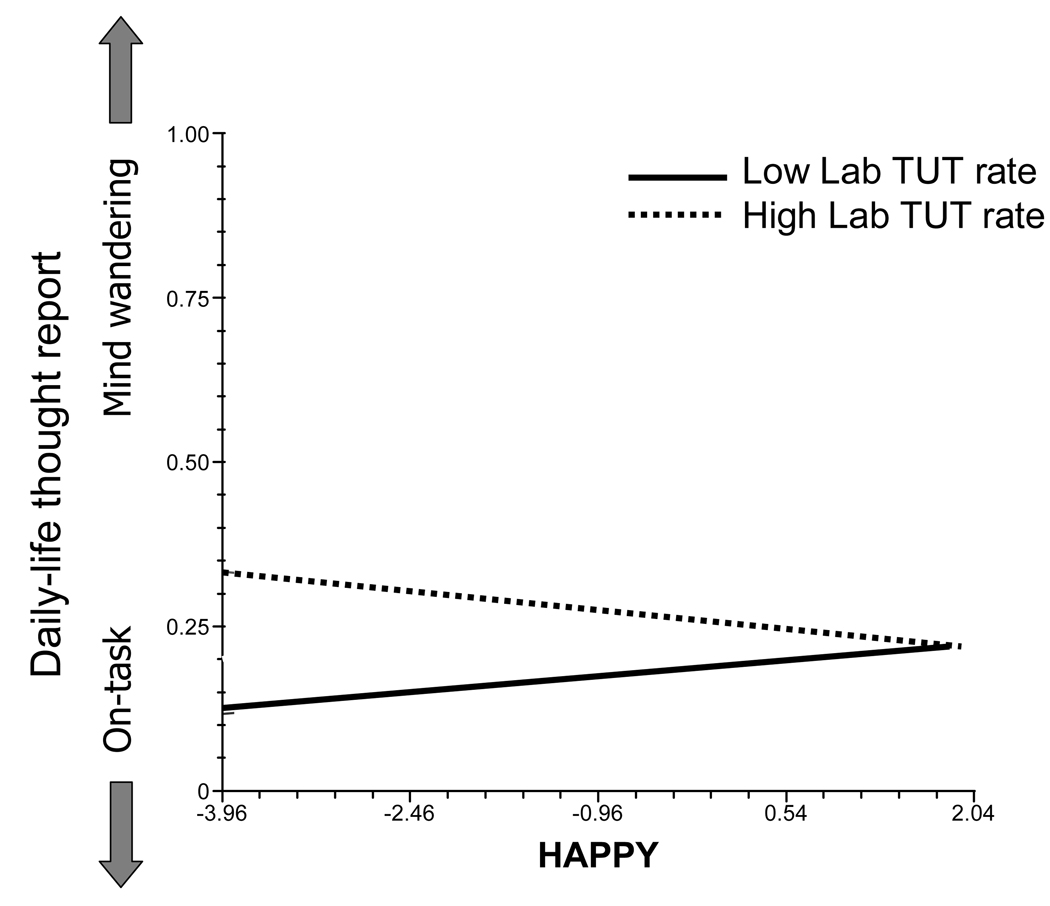Figure 2.
The relation between daily-life mind wandering and self-reported happiness as a function of the propensity to experience task-unrelated thoughts (TUTs) during a lab task. Lines depict the means of the within-person slopes for subjects in the top and bottom quartiles for laboratory TUT rate. Values on the y-axis represent the mind-wandering dependent variable, scored on each questionnaire as either a 1 (for mind wandering) or 0 (for on-task thoughts). Values on the x-axis represent group-centered ratings for happiness (“I feel happy right now.”).

